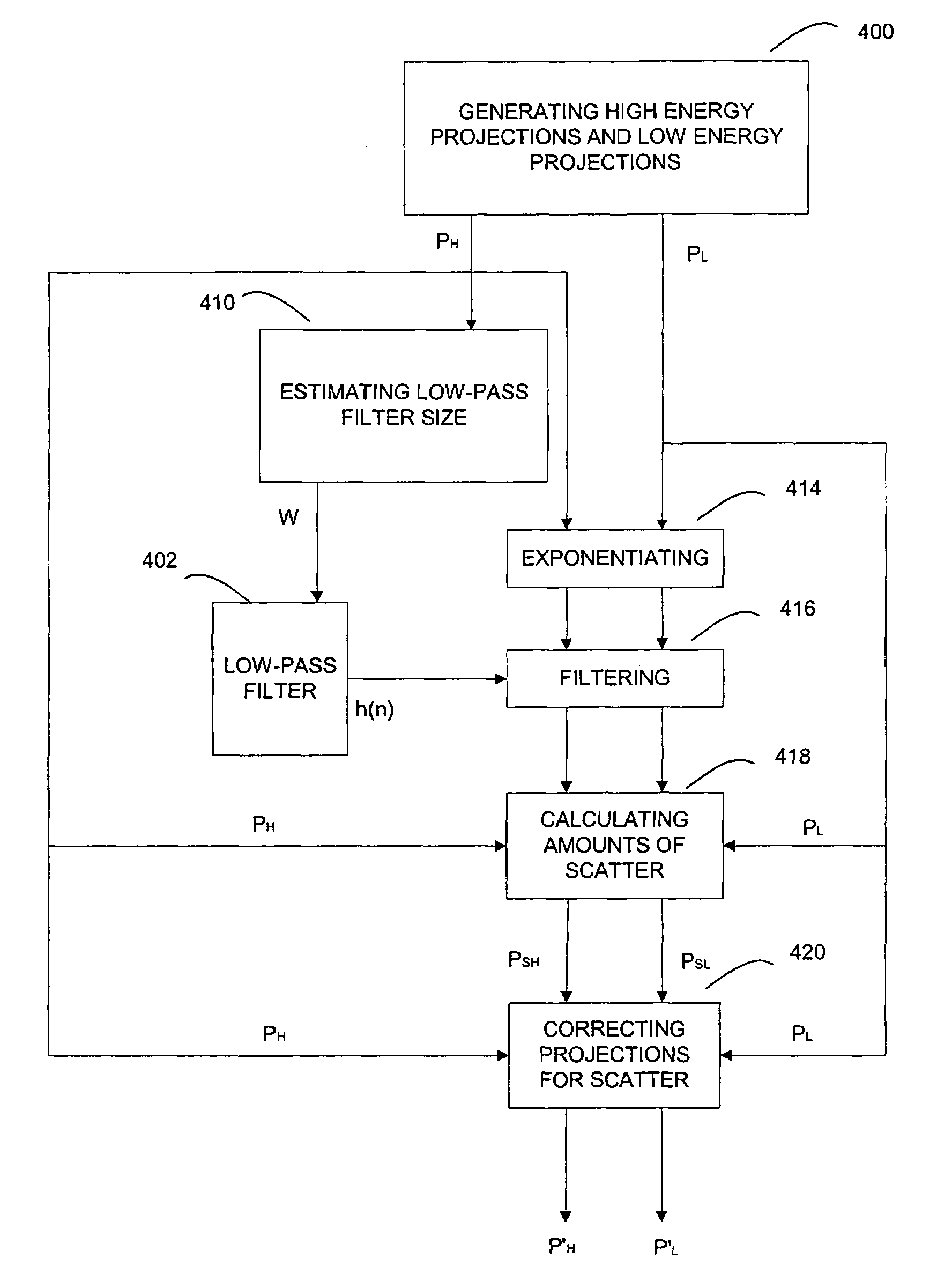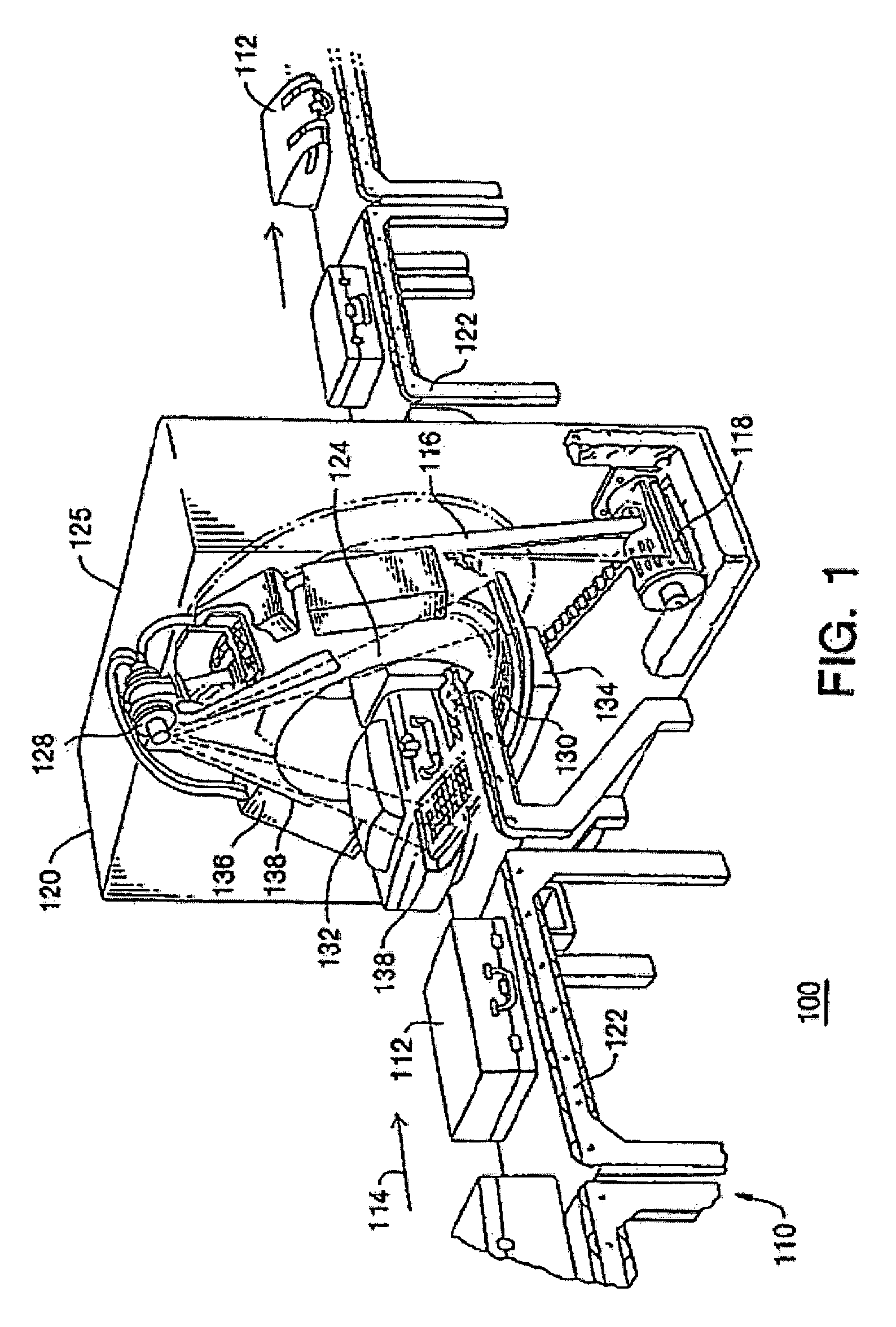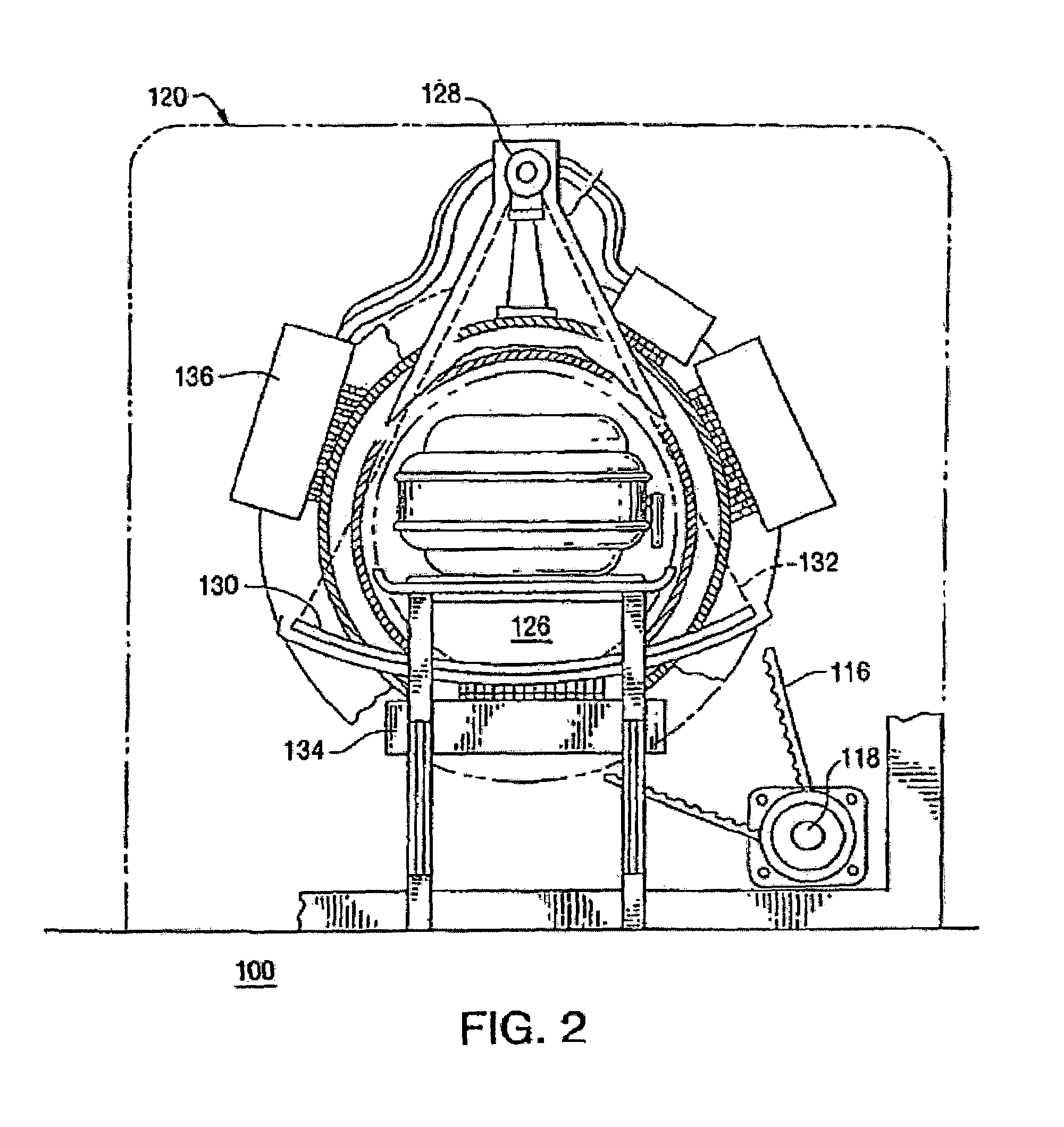Method of and system for adaptive scatter correction in multi-energy computed tomography
a multi-energy computed tomography and scatter correction technology, applied in tomography, applications, instruments, etc., can solve the problems of plastic explosives presenting a particular challenge to baggage scanning systems, plastic explosives may be formed into geometric shapes that are difficult to detect, plastic explosive detection may be difficult, etc., to achieve the effect of improving the quality of z (effective atomic number) images
- Summary
- Abstract
- Description
- Claims
- Application Information
AI Technical Summary
Problems solved by technology
Method used
Image
Examples
Embodiment Construction
[0078]In accordance with the disclosure, an adaptive scatter correction algorithm for multi-energy projections is provided to better estimate amounts of scatter and correct for them, resulting in improved quality of Z (effective atomic number) images. The algorithm does not use scatter detectors to measure the amounts of scatter, but instead, estimates the amounts of scatter from the input projection data. The algorithm preferably takes the spatial correlation of the scattering process into account, and adaptively uses attenuations and shapes of scanned objects to estimate the amounts of scatter, thereafter correcting for them.
[0079]FIG. 6 illustrates the signal and data flow of the scanner system for explosive detection for the checked baggage for an airport of the present disclosure. Scanner 120 is typically similar to the one shown in FIG. 1 and has an X-ray source capable of producing a fan beam at two distinct energy levels (i.e., dual energy). DAS 134 gathers signals generated...
PUM
| Property | Measurement | Unit |
|---|---|---|
| atomic number | aaaaa | aaaaa |
| atomic number | aaaaa | aaaaa |
| energy | aaaaa | aaaaa |
Abstract
Description
Claims
Application Information
 Login to View More
Login to View More - R&D
- Intellectual Property
- Life Sciences
- Materials
- Tech Scout
- Unparalleled Data Quality
- Higher Quality Content
- 60% Fewer Hallucinations
Browse by: Latest US Patents, China's latest patents, Technical Efficacy Thesaurus, Application Domain, Technology Topic, Popular Technical Reports.
© 2025 PatSnap. All rights reserved.Legal|Privacy policy|Modern Slavery Act Transparency Statement|Sitemap|About US| Contact US: help@patsnap.com



